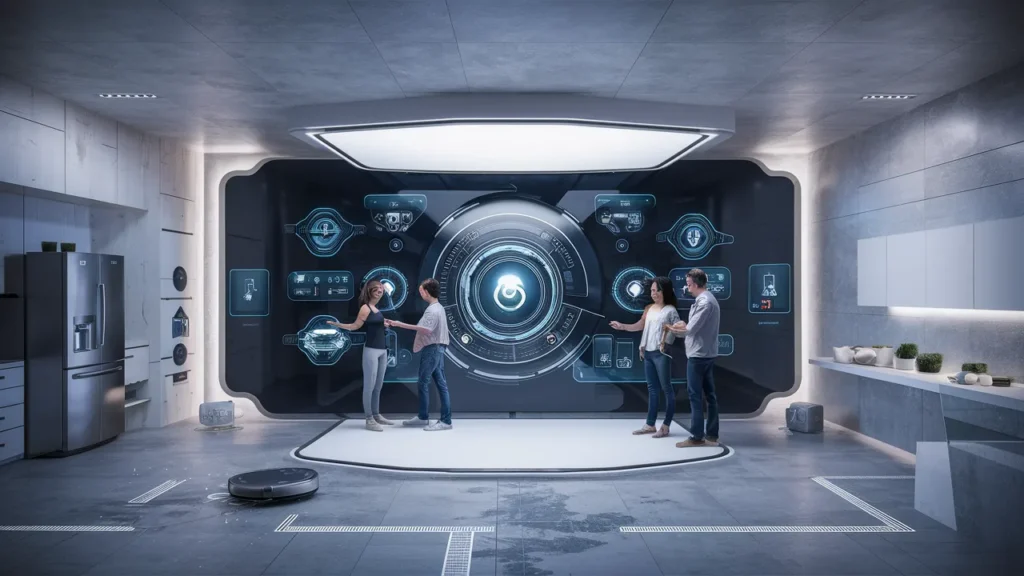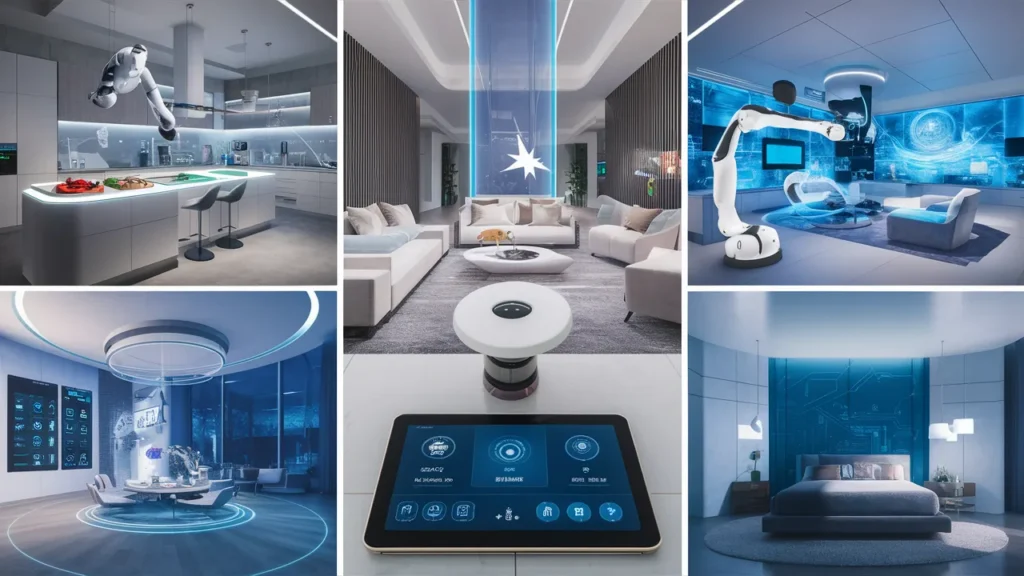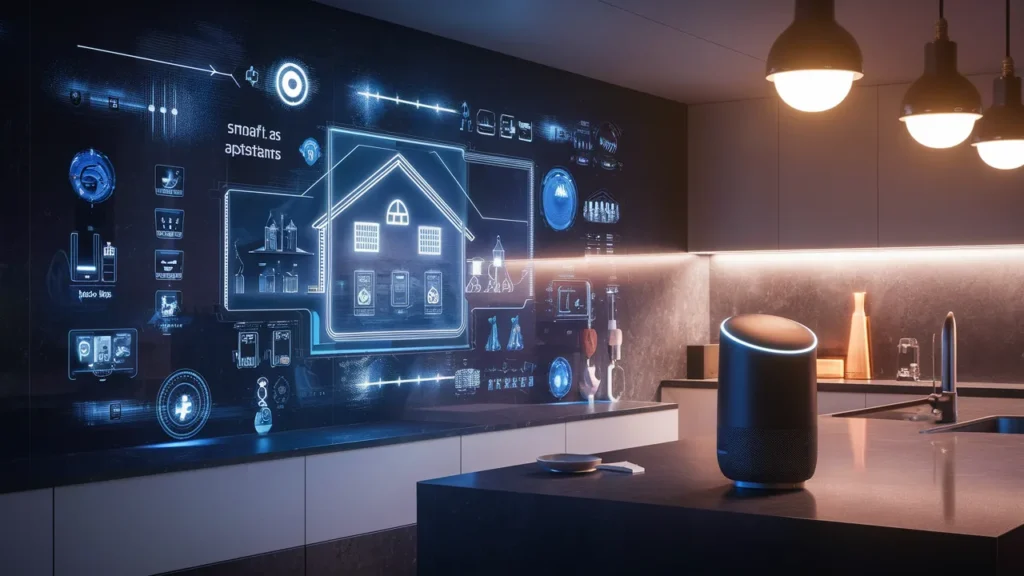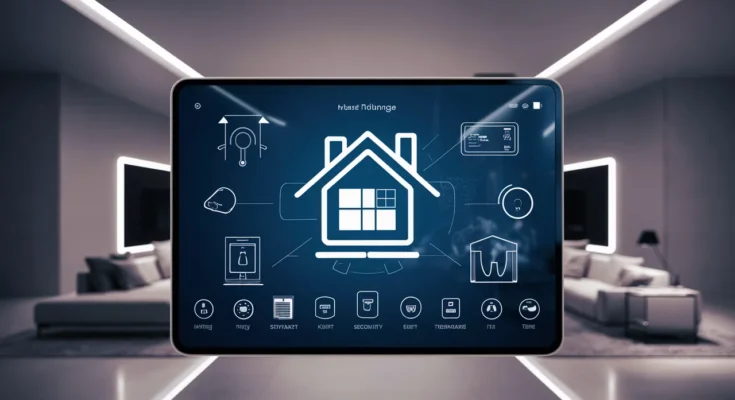In an era defined by technological advancements, the concept of home automation has become increasingly popular. Smart home automation involves the integration of various. Devices and systems within a household to create a more efficient, convenient, and secure living environment. From controlling lights and thermostats to managing security cameras and kitchen appliances, the possibilities are endless. In this comprehensive guide, we will explore everything you need to know about. Smart home automation, including frequently asked questions (FAQs) to help you understand the ins and outs of this innovative technology.

What is Smart Home Automation?
Smart home automation refers to the use of interconnected devices and systems that can be remotely monitored and controlled to enhance the functionality, comfort, and security of a home.
How Does Smart Home Automation Work?
Smart home automation relies on a combination of sensors, actuators, and communication protocols to enable devices to communicate with each other and with the user. Sensors gather data about the environment, while actuators perform actions based on that data. Communication protocols such as Wi-Fi, Bluetooth, Zigbee, and Z-Wave facilitate the exchange of information between devices and the central control system.
What Are the Benefits of Smart Home Automation?
- Convenience: With smart home automation, you can control various aspects of your home remotely, making it easier to manage tasks and routines.
- Energy Efficiency: Automated thermostats and lighting systems can help reduce energy consumption by optimizing usage based on occupancy and preferences.
- Security: Smart home security systems provide real-time monitoring and alerts, allowing you to keep an eye on your home even when you’re away.
- Safety: Smart smoke detectors, carbon monoxide detectors, and water leak sensors can help prevent accidents and mitigate risks.
- Customization: You can tailor automation settings to suit your lifestyle and preferences, creating a personalized smart home experience.
What Devices Can Be Automated in a Smart Home?
- Lights: Smart light bulbs, switches, and dimmers allow you to control lighting levels and schedules remotely.
- Thermostats: Smart thermostats enable you to adjust temperature settings and create heating and cooling schedules from anywhere.
- Security Cameras: Smart security cameras offer live streaming, motion detection, and recording capabilities for enhanced home surveillance.
- Door Locks: Smart locks allow you to lock and unlock doors remotely, as well as grant access to guests or service providers.
- Kitchen Appliances: Smart kitchen appliances such as refrigerators, ovens, and coffee makers can be controlled and monitored for added convenience.

Is Smart Home Automation Secure?
Security is a crucial aspect of smart home automation. To ensure the safety of your devices and data, it’s essential to follow best practices such as:
- Secure Network: Use a strong, unique password for your Wi-Fi network and enable encryption to prevent unauthorized access.
- Firmware Updates: Regularly update the firmware of your smart devices to patch security vulnerabilities and improve performance.
- Authentication: Enable two-factor authentication whenever possible to add an extra layer of security to your accounts.
- Privacy Settings: Review and adjust privacy settings to limit data collection and sharing by smart devices and applications.
How Can I Get Started with Smart Home Follow these steps to begin:
- Assess Your Needs: Identify areas of your home where automation could improve efficiency, convenience, or security.
- Choose Compatible Devices: Select smart devices that are compatible with your existing infrastructure and communication protocols.
- Set Up a Central Hub: Invest in a central hub or controller to manage and coordinate your smart devices from a single interface.
- Install and Configure Devices: Follow the manufacturer’s instructions to install and configure your smart devices, ensuring they connect to your network properly.
- Create Automation Rules: Use the hub’s software or companion app to create automation rules and schedules tailored to your preferences.

Conclusion
Smart home automation offers a wealth of benefits, from convenience and energy efficiency to enhanced security and safety. By harnessing the power of interconnected devices and systems, you can transform your living space into a more efficient, comfortable, and secure environment.



Thanks for discussing your ideas. The one thing is that individuals have a selection between national student loan and also a private education loan where it truly is easier to go with student loan consolidation than through the federal education loan.
Smart Home Automation – ElectronicHub
acmbfrxkivg
cmbfrxkivg http://www.g8g728mt00u6a1ru6z266wvoxsz5i854s.org/
[url=http://www.g8g728mt00u6a1ru6z266wvoxsz5i854s.org/]ucmbfrxkivg[/url]
Thank you for your articles. I find them very helpful. Could you help me with something?
Mens Swim Trunks
Plain Shirts For Men
SEALING MACHINE
louisvuittonsingaporeboutique
Tight Shorts
PTFE PRODUCTS
EXPANDED PTFE SHEET
Grid Tie Battery Inverter
PTFE TUBE
louisvuittonspeedy25purse
lavidamata.xyz
louisvuittontiescompany
ブランドスーパーコピー
louisvuittonsalessingapore
EXPANDED PTFE SEALING TAPE
louisvuittontotebagpurse
Black T Shirt Women
Small Led Display
ブランドスーパーコピー
cheap Pastease Pink Hologram Cross Pasties
Running Led Display Board
4mm Clear PVC Curtain Sheet
High Hardness Round Bar Grey PVC Rod
Led Board Maker
Led Digital Signage
cheap Pastease Slow Burn Glossy Pasties
High Quality PVC Panel
alajlangroup.com
cheap Pastease Shiny Glow-in-the-Dark Shroom Nipple Pasties
Customized Size PVC Rod
cheap Pastease Spade & Heart Pasties
cheap Pastease Slow Burn Matte Pasties
Gray Hard PVC Rod Dark Gray PVC Bar
Led Digital Signage
Titanium Alloy Plate
China Seamless Pipe and Steel Manufacturing
High Density Polyethylene Plastic Sheet Board
buy cheap Adult Rainbow Unicorn Costume – Tutu Skirt & Headband Set for Adult or Plus Size
Stainless Steel Pipes
ブランドスーパーコピー
Red Color Pe Polyethylene Plastic Sheet
alajlangroup.com
buy cheap Adult Ringmaster Greatest Showman Costume – Black Dot Tutu Skirt & Headband Hat Set for Adult or Plus Size
Excellent Thermal Stability PEEK Rod
Polyethylene Plastic Cutting Boards
buy cheap Adult Red Devil Costume – Red Tutu Skirt, Tail, Bow Tie, & Headband Horns Set for Adult or Plus Size
Customized Acrylic 9 Bay 90 Nespresso Capsule
buy cheap Adult Rainbow Royal Blue Unicorn Costume – Tutu Skirt & Flip Sequin Headband Horn Set for Adult or Plus Size
China Seamless Stainless Steel Pipe and 304 Stainless Steel Pipe
China Fin Tube and Finned Tube
buy cheap Adult Rainbow Red Unicorn Costume – Tutu Skirt & Flip Sequin Headband Horn Set for Adult or Plus Size
Solar Panel Street Light
Carbon Filled PTFE
cheap RAVE VEST HEX SMILEY
PTFE Guide strip
cheap RAVE TEAM L S JERSEY
Glass Filled Plus Pigment
ブランドスーパーコピー
PEEK Filled PTFE
hcaster.co.kr
Toddler Girl Knickers
Baby Infant Body Romper Bodysuit Onesie With Shortsleeve Solid Color
cheap RAVE ON TECH VEST MUTLI NEON WOMENS
cheap RAVE SHORTS
cheap RAVE PANTS
Solar Powered Street Lights
Graphite Filled PTFE
Solar Street Lamp Post
PU
Electric Air Con Compressor
Road King Electric Bike
PU Sheet
buy cheap Beige Turtleneck Top and Plaid Skort Set
buy cheap Believe In Magic Backpack and Lunchbox Set
PVC ROD
http://www.terapiasinfronteras.com
buy cheap Bejeweled Purple Full Size Kids' School Backpack
buy cheap Bejeweled Princess T-Strap Sandals By Liv and Mia
Electric Ac Compressor
Auto Ac Compressor
PVC Film
PVC Sheet
Electric Scooter
ブランドスーパーコピー
buy cheap Bejeweled Girls Lavender Pop Star Tankini Swim Set
Nylon Extrusion Machine
O-RINGS
buy cheap Pimp White Deluxe Mens Shoes
NON-METALLIC GASKETS
RUBBER GASKETS
Automotive Sealing Extrusion Line
viktoriamebel.by
CERAMIC FIBER GASKETS
Plastic Extrusion Screw And Barrel
buy cheap Pimp Silver Deluxe Mens Shoes
buy cheap Piece Outdoor Giant Jenjo Wooden Block Game 81cm
ブランドスーパーコピー
Pipe Line
buy cheap Pimp Purple Suit Mens Costume
Plastic Tube Extrusion
JACKETED GASKETS
buy cheap Pimp Tiger Suitmeister